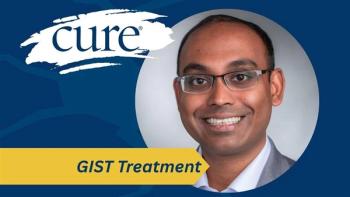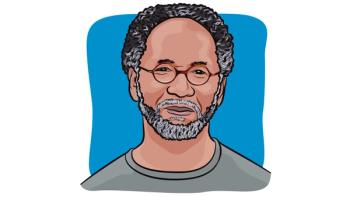
Optimizing Neoadjuvant Chemotherapy in Ovarian Cancer
Optimizing the use of neoadjuvant chemotherapy could improve outcomes for patients with ovarian cancer.
Evidence shows that neoadjuvant chemotherapy (NACT) reduces mortality and improves quality of life for patients with advanced ovarian cancer. However, many oncologists are still questioning the right way to use this treatment in their clinical practice.
This obstacles includes how to best select which patients should receive NACT, explained Michael A Bookman, M.D., during a presentation at the 34th Annual Chemotherapy Foundation Symposium.™
Bookman, medical director of US Oncology Research and chair of the NRG Oncology Ovarian Committee, reminded his audience that treatment advances, including NACT, have failed to reduce ovarian cancer mortality primarily because the disease is often diagnosed at a later stage.
“We’ve made progress, helped patients, and improved outcomes, but we’re really only seeing modest declines in incidence and mortality,” said Bookman, developments which he attributes mostly to an uptick in risk-reducing surgery and a reduction in the use of hormone replacement therapy by postmenopausal women.
What has changed in this setting over the last several years, Bookman remarked, has been the adoption of NACT, and when phase 3 studies of the approach are considered in aggregate, they do tend to favor its use in patients with advanced-stage, high-risk ovarian cancer.
A recent study coauthored by Bookman and based on data from six NCI-designated cancer centers examined the use of NACT versus primary cytoreductive surgery. The results show that use of NACT increased from 16 percent in 2003 to 34 percent in 2012 in women with stage 3C ovarian cancer, and from 41 percent to 62 percent in those with stage 4 disease—a trend Bookman said has contributed to improved quality of life, symptom management, and reduced perioperative morbidity.
Yet questions remain about how to identify which patients are most likely to benefit from NACT, and better strategies are needed to triage patients between primary surgery and NACT. In addition, not all microscopic residual disease is the same, Bookman noted, and the role of aggressive upper abdominal surgery in patients with extensive disease remains uncertain.
To shed light on these treatment challenges, researchers are exploring tumor markers and molecular pathways associated with invasive metastatic behavior, as well as comorbidities and distribution of disease. Bookman expects that in the future, there will be better information to guide decision making, but currently, “The paradigms are predictive, but not predictive enough for us to be comfortable making a surgical decision based on a laboratory test.”
In the meantime, Bookman said, with some 40 percent of patients undergoing NACT, “we have a way of looking at pre- and posttreatment biopsies to explore incorporating new agents and to try and move the field forward.”
A phase 1/2 trial under the auspices of NRG Oncology, which is currently recruiting participants, will evaluate toxicity and cumulative tolerability of paclitaxel and carboplatin—based NACT with or without Jakafi (ruxolitinib) in patients with stage 3/4 epithelial, peritoneal or fallopian carcinoma (
Beyond the need to tailor patient selection for surgical interventions in the setting of advanced ovarian cancer, other surgical challenges and opportunities include validating early response endpoints during NACT and integrating molecular targeted agents with NACT, Bookman said.
“NACT with interval cytoreductive surgery is safer, more controlled, and at least as effective as primary surgery in high-risk advanced disease,” Bookman concluded, “while offering a platform to evaluate new treatment interventions.”
Nevertheless, while “current therapy for ovarian cancer is effective, it is not generally curative, and we really need to foster innovation.”





